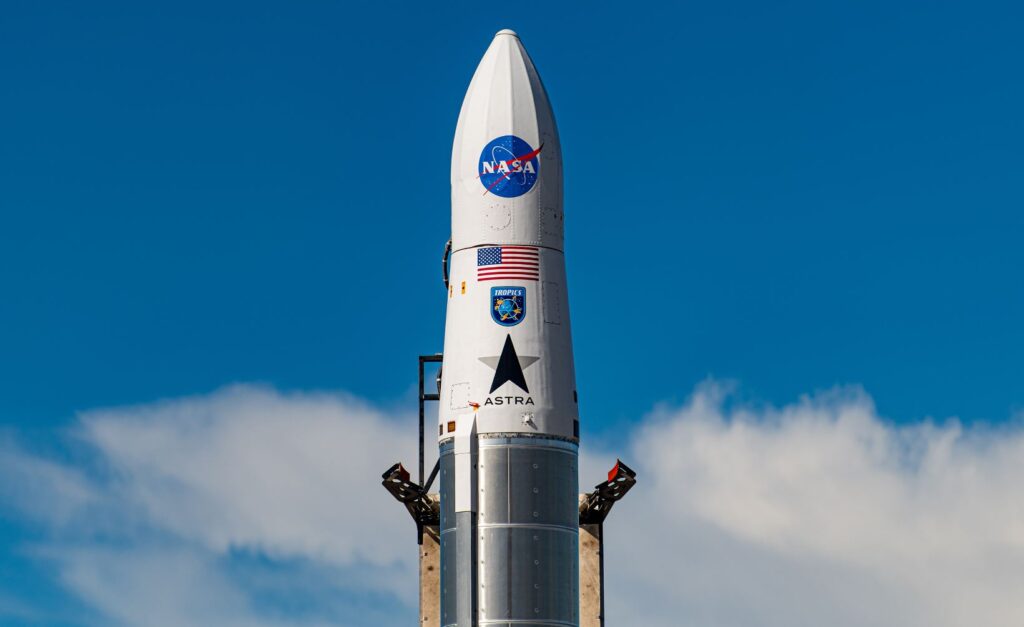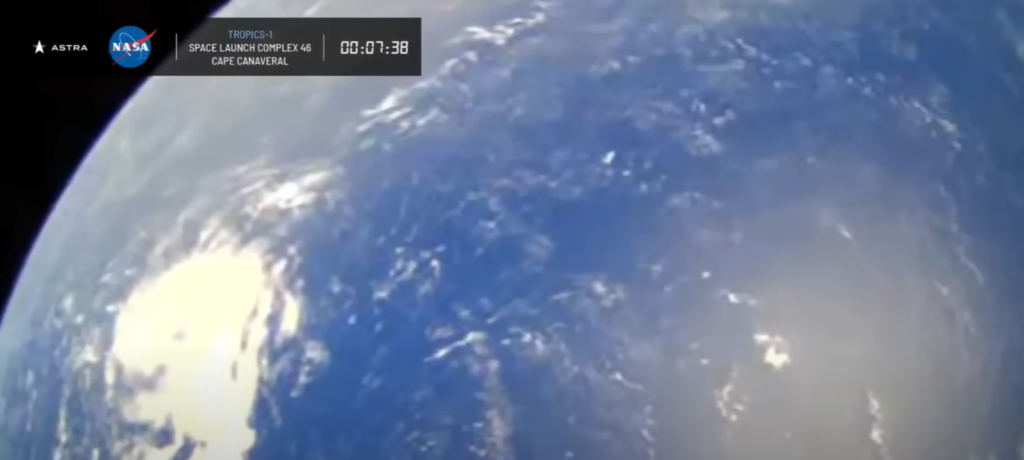
Astra Fails To Reach Orbit And Deliver NASA TROPICS Payloads
Many of us have been keeping up with Astra as they continue to work towards ambitious goals for the future. After multiple failed attempts in previous years, Astra recently had its first successful payload delivery. This marked a massive milestone for the company as reaching orbit is an immensely difficult task, even more so on the first attempt.
However, just yesterday Astra failed to reach orbit and successfully deliver the multiple payloads on board apart of the NASA TROPICS Mission. The mission was intended to provide rapid-refresh microwave measurements over the tropics that could be used for a host of beneficial properties. Unfortunately, right now rather than celebrating, Astra has begun investigating what exactly went wrong.
In recent months it has seemed as if Astra was making impressive progress in many different ways. Not only in the success of multiple launches but also in improving the time between launch and other important aspects of a rocket company. Here I will go more in-depth into the purpose of this launch, what went wrong, and what we can expect to see in the future from Astra.
Launch Failure

Unfortunately for Astra and the NASA payloads on board, the TROPICS mission failed to reach orbit and deliver the payloads. So far, the only update from Astra came in the form of a tweet not long after the launch failure. Specifically, Astra tweeted saying, “We had a nominal first stage flight. The upper stage shut down early and we did not deliver the payloads to orbit. We have shared our regrets with @NASA and the payload team. More information will be provided after we complete a full data review.” As of right now, Astra is working to find out exactly what went wrong and how they can prevent it in the future.
The company has had a tough time in recent years trying to reach orbit. This recent mishap makes Astra 2 for 8 when launching rockets. While not ideal, it’s important to point out that many companies within the industry experience multiple failures towards the beginning. Taking a closer look at the launch, everything went according to plan for the majority of events prior to the failure. After the countdown, LV0010 took off from Cape Canaveral Space Force Station and began speeding up and gaining altitude. Around 1 minute and 18 seconds into the launch and the rocket sped through Max Q without any issues. Just after 3 minutes, you could see a successful fairing and stage separation which the company has had issues with in the past. From here, about 4 minutes went by as we watched an onboard camera of the second stage continue to accelerate. Right at 7 minutes and 21 seconds into the launch, the camera shows the engine of the second stage turn off which is followed by the stage losing control prior to second engine cut off. Astra’s senior manager mentioned during the live commentary, “We had a nominal first stage flight; however, the upper-stage engine did shut down early and we did not deliver our payloads to orbit,”
NASA said in a statement not long after the launch, “While we are disappointed in the loss of the two TROPICS CubeSats, the mission is part of NASA’s Earth venture program, which provides opportunities for lower-cost, higher risk missions. Despite a loss of the first two of six satellites, the TROPICS constellation will still meet its science objectives with the four remaining CubeSats distributed in two orbits. With four satellites, TROPICS will still provide improved time-resolved observations of tropical cyclones compared to traditional observing methods.” They pointed out that TROPICS is an Earth venture mission – science-driven, competitively selected, low-cost mission that provides opportunity for investment in innovative Earth science to enhance our capability to better understand the current state of the Earth system and to enable continual improvement in the prediction of future changes.
As the agency works with emerging launch providers for cost-effective launch capabilities to space, these types of missions are important to expand our scientific knowledge while fostering the U.S. commercial launch industry. As a Federal Aviation Administration (FAA) licensed mission, the FAA and Astra will lead the investigation to understand what happened during the TROPICS-1 launch. NASA will lend any expertise needed but would expect to pause the launch effort with Astra while an investigation is being conducted to ensure we move forward when ready. NASA’s Launch Services Program, which is managing the launch service for the mission, continues to work with emerging launch providers to deliver low-cost science missions into orbit with contracts that align with commercial practices, using less NASA oversight to achieve lower launch costs. Small satellites and Class D payloads tolerate relatively high risk and serve as an ideal platform for technical and architecture innovation, contributing to NASA’s science research and technology development.
The agency finished by saying, thanks to the transparency displayed by Astra, NASA has been involved with the investigation on Astra’s previous launch. Additionally, we have been engaged in the discussions about lessons learned and corrective actions. We recognize the risks inherent in a new launch provider and will lend our assistance as needed.
TROPICS & Astra

Now that we know more about the launch itself and part of what went wrong, we can take a closer look at the mission and what was lost in this launch. The TROPICS mission goal is to provide rapid-refresh microwave measurements over the tropics that can be used to observe the thermodynamics of the troposphere and precipitation structure for storm systems at the mesoscale and synoptic scale over the entire storm lifecycle. TROPICS comprises a constellation of CubeSats in three low-Earth orbital planes. Each CubeSat will host a high-performance radiometer scanning across the satellite track at 30 RPM to provide temperature profiles using seven channels near the 118.75 GHz oxygen absorption line, water vapor profiles using 3 channels near the 183 GHz water vapor absorption line, imagery in a single channel near 90 GHz for precipitation measurements, and a single channel at 205 GHz for cloud ice measurements. In total, there were intended to be 6 satellites launched as part of three Astra missions. Due to the recent failure, only four satellites will be launched if everything goes according to plan.
The constellation of identical 3U CubeSats provide sounding (left CubeSat has a temperature profile of a simulated Tropical Cyclone (TC) from a numerical weather prediction (NWP) model) and 12-channel radiometric imagery (center CubeSat has simulated radiances from NWP model and radiative transfer model and the near right CubeSat has a single-channel radiance image of a TC) with a median revisit rate approaching 60 minutes to meet state-of-the-art performance.
This observing system offers an unprecedented combination of horizontal and temporal resolution to measure environmental and inner-core conditions for tropical cyclones (TCs) on a nearly global scale and is a profound leap forward in the temporal resolution of several key parameters needed for detailed study of high-impact meteorological events (TCs being the primary emphasis in this proposal). TROPICS will demonstrate that a constellation approach to Earth science can provide improved resolution, configurable coverage (tropics, near global, or global), flexibility, reliability, and launch access at extremely low cost, thereby serving as a model for future missions.
As far as Astra’s future, this failure is a big setback. Not long ago the company released a shareholder letter highlighting the company’s achievements and plans for the future. This included cutting time done between launches and successfully reaching orbit for the first time. It also provided a three phase approach for the future of the company. The letter mentions that “In Phase 1, Astra is primarily focused on dramatically increasing access to space, because you can’t build a space platform that will improve life on Earth from space if you can’t get to space.” They then point out that “While rocket science may be notoriously complicated, economies of scale apply like any other industry. Put simply, if you produce something at higher and higher volumes, regardless of how complex it is, it is easier to reduce the per-unit cost.” In terms of Astra, it seems that before they work on any phase of the future, they need to work on the launch system and ensure it can successfully reach orbit in the coming missions. Until then, we will have to wait for the company to release a report on what exactly went wrong and how they plan to fix it.
Conclusion
In the past few months, Astra was making some impressive progress and showing promising results. Not long ago they had their first successful launch and payload delivery. Unfortunately for the company, yesterday marked an 8th failed launch as the second stage engine cut off early before reaching orbit during the TROPICS mission. We will have to wait and see how it progresses and the impact it has on the space industry.
